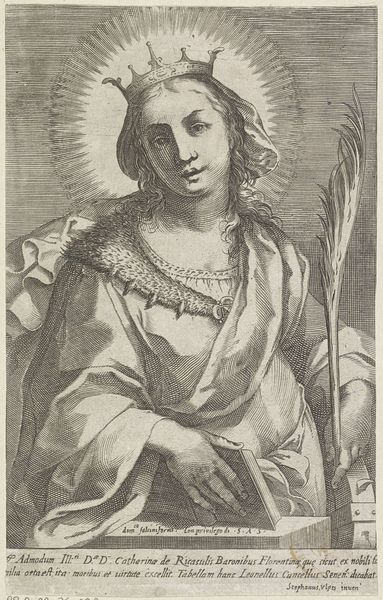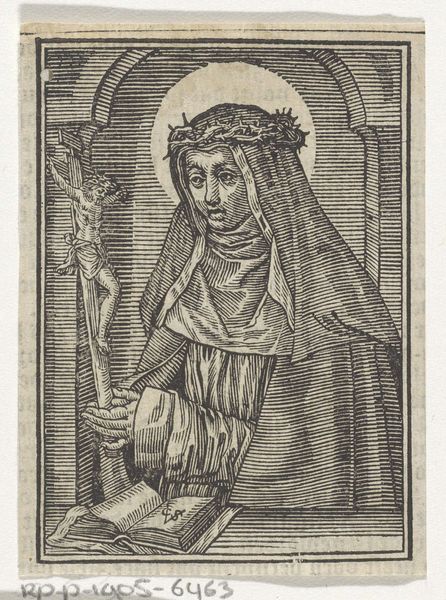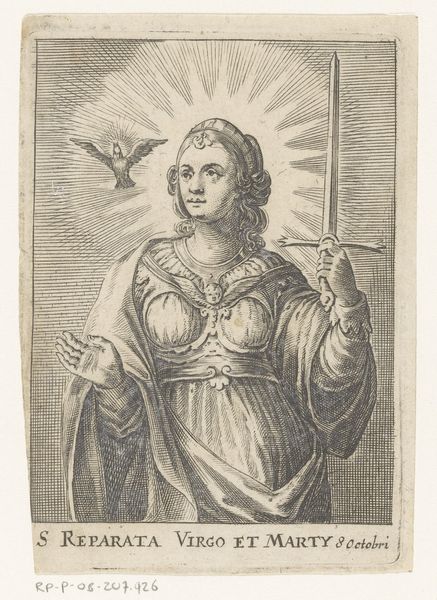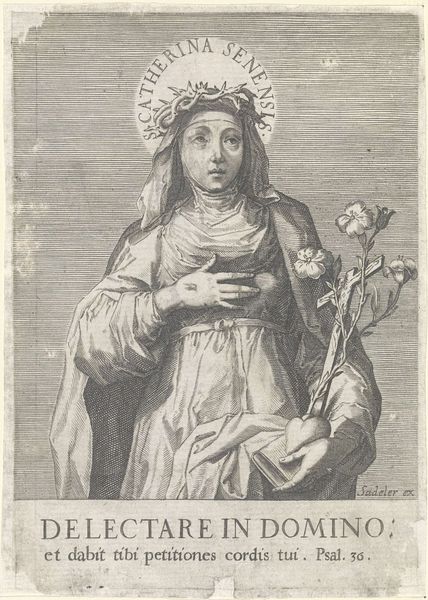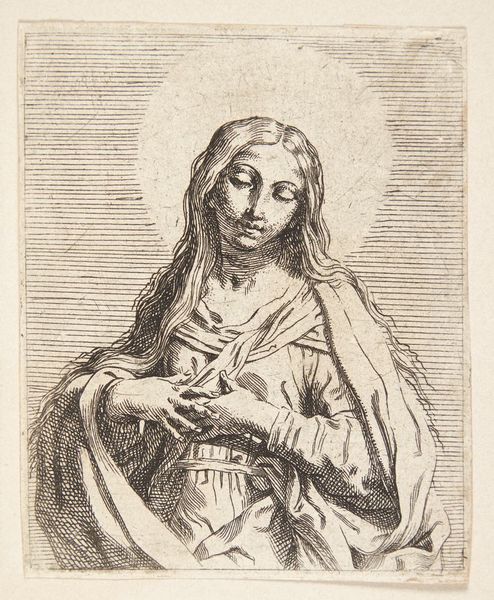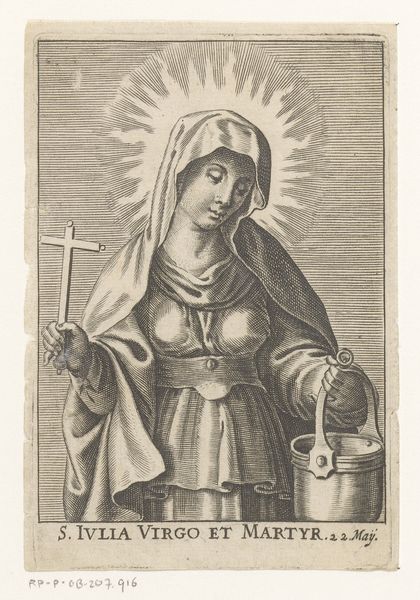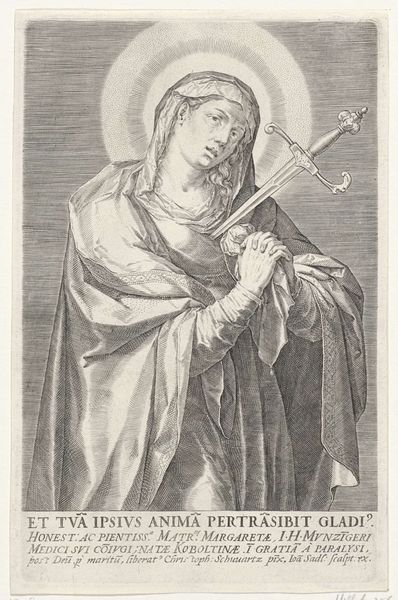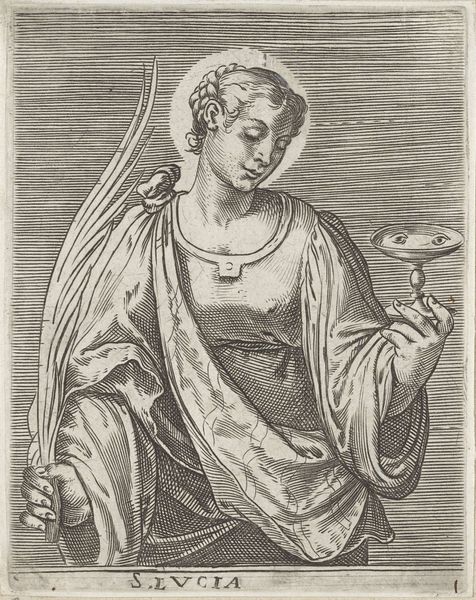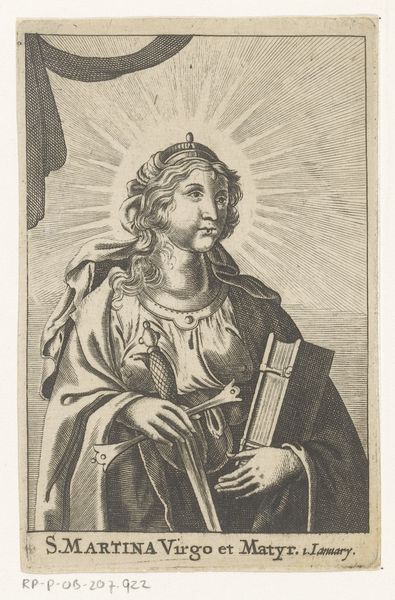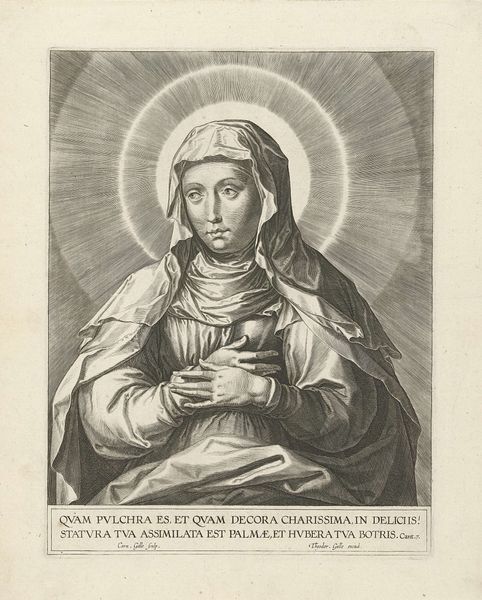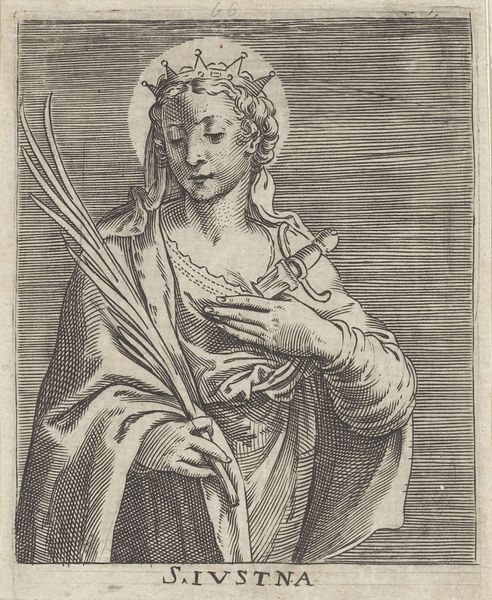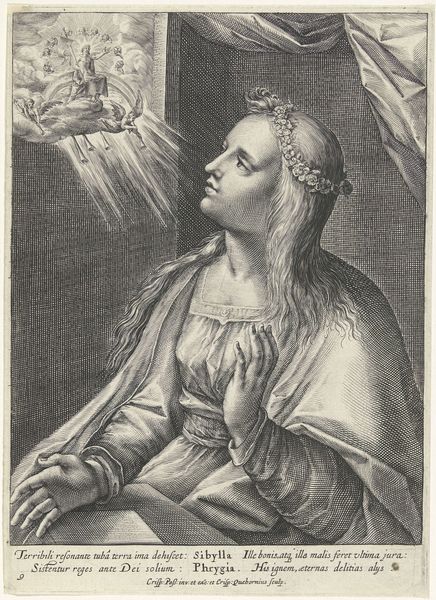
print, engraving
#
portrait
#
baroque
# print
#
pen illustration
#
portrait drawing
#
history-painting
#
engraving
Dimensions: height 141 mm, width 87 mm
Copyright: Rijks Museum: Open Domain
Curator: This engraving, dating sometime between 1610 and 1672, presents us with “Maria, met scepter in de hand,” or Mary with a scepter in her hand, attributed to Wierix. The work exudes a baroque sensibility. What are your first thoughts? Editor: My initial impression is one of serenity and controlled opulence. The figure emanates a soft glow, but the dense lines also lend it an air of formality. There’s a tension between the sacred and the sumptuous. Curator: Engravings like this were quite accessible in their time. Produced using relatively affordable materials, they disseminated imagery and devotional iconography to a broad audience. The print medium itself became a powerful tool. Editor: Absolutely. And the inscription at the bottom hints at the historical context, referencing a biblical passage, and associating her with beauty and fruitfulness. Consider also, though, how the engraver utilized the tools available to him—the stylus, the metal plate—to meticulously translate flesh into a series of controlled marks. It speaks to a system of value placed upon precise craftsmanship. Curator: Yes, and the Baroque emphasis on ornate detail really comes across through that precision. How the folds in her garment are rendered, the texture of her hair... these elements communicate both status and spiritual virtue, reflecting prevailing cultural and political ideals of the period. Prints such as this one served not only for private contemplation, but also contributed to constructing a certain public image of the Virgin Mary. Editor: Thinking about the materials – the paper it’s printed on, the ink used – these were commodities themselves, integral to the circulation of this imagery. So the artwork is simultaneously an object of reverence and a product deeply enmeshed in the mercantile systems of the 17th century. Curator: That’s an excellent point; by recognizing the economic contexts within which art exists, and by considering print media as something to consume, our historical perspective of the work gets substantially deeper. Editor: Precisely! This deep dive into the materiality of creation reveals not just the devotion but the calculated craftsmanship behind these icons. Curator: Ultimately it broadens our interpretation when we consider social context to provide different interpretive possibilities. Editor: I agree. We arrive with expanded ideas and perceptions of devotional images of this period.
Comments
No comments
Be the first to comment and join the conversation on the ultimate creative platform.
